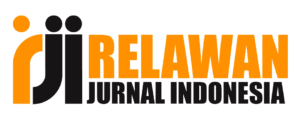Pemanfaatan Abu Ampas Tebu Limbah Pabrik Gula Cinta Manis Kabupaten Ogan Ilir Sebagai Additive Beton
DOI:
https://doi.org/10.31851/sainmatika.v17i1.3383Keywords:
Ash, Cane Bagasse, Concrete AdditiveAbstract
ABSTRACT
Â
Cane is one of the plantation commodities managed as raw material for making sugar. PT. Cinta Manis as one of the sugar producers has sugarcane production and management activities on a large scale. Production of sugar with raw material in large quantities every day, produces a by-product of sugarcane bagasse waste. Currently sugarcane bagasse waste is only used as compost after going through several stages of processing. The study was conducted in a laboratory by physically changing cane bagasse to ash through burning. Furthermore, the ash from the sugarcane bagasse was added to high quality concrete K-300. The results of the laboratory tests carried out showed that the addition of Cane Bagasse Ash (CBA) by 5% can increase the compressive strength of the concrete 6.43% higher than the normal compressive strength of the concrete. However, the addition of CBA which is greater than 5% to the cement in the concrete actually decreases the quality of the compressive strength of the concrete. This means that the 5% CBA content can be used to increase the compressive strength of concrete.References
American Civil Institute Committee. (1986). State-of-the-Art Report on Alkali-Aggregate Reactivity. 212. IR- 81, from http://civilwares.free.fr/ACI/MCP04/2211r_98.pdf
American Standard Testing and Material. (1995). Standard Speciï¬cation for Chemical Admixtures for Concrete. C.494. 1995: 254, from https://id.scribd.com/document/339929492/ASTM-C494-pdf-pdf
Karimah, R., & Wahyudi, Y. (2016). Pemakaian Abu Ampas Tebu Dengan Variasi Suhu Sebagai Substitusi Parsial Semen Dalam Campuran Beton, Media Teknik Sipil. Volume 13. Nomor 2. 167-173. Jurusan Teknik Sipil – Fakultas Teknik Univ. Muhammadiyah Malang. http://ejournal.umm.ac.id/index.php/jmts/article/view/2563 https://doi.org/10.22219/jmts.v13i2.2563
Mulyadi, S., Dahlan, D., Adril, E. (2012) Pengaruh Persen Massa Hasil Pembakaran Serbuk Kayu Dan Ampas Tebu Pada Mortar Terhadap Sifat Mekanik Dan Sifat Fisisnya, Jurnal Ilmu Fisika (Jif), Volume 4. Nomor 1. 31-39, Laboratorium Material dan Struktur, Jurusan Fisika, FMIPA UNAND http://jif.fmipa.unand.ac.id/index.php/jif/article/view/71 https://doi.org/10.25077/jif.4.1.31-39.2012
Mulyono, Tri. (2003). Teknologi Beton. Yogyakarta: Penerbit Andy.
Murdock, L., J., & Brook, K., M.(1999). Bahan Dan Praktek Beton. Jakarta: Penerbit Erlangga.
Rompas, G.,P., Pangouw, J.,D., Pandaleke, R., & Mangare, J.B. (2013). Pengaruh Pemanfaatan Abu Ampas Tebu Sebagai Substitusi Parsial Semen Dalam Campuran Beton Ditinjau Terhadap Kuat Tarik Lentur Dan Modulus Elastisitas, Jurnal Sipil Statik Vol.1 No.2. 82-89. Fakultas Teknik Jurusan Teknik Sipil Universitas Sam Ratulangi https://ejournal.unsrat.ac.id/index.php/jss/article/view/926
Sagel, R., Kole, P., & Kusuma, G., .H. (1977). Pedoman Pengerjaan Beton. Jakarta: Penerbit Erlangga.
Sumardi, K. (1998). Teknologi Beton dan Bahan Beton. Bandung: Politeknik Negeri Bandung
Surat Keputusan Standar Nasional Indonesia. (1990). Tata Cara Perhitungan Struktur Beton Untuk Bangunan Gedung. T-15-1990-03, from https://docfoc.com/sksni-t-15-1991-03-tata-cara-perhitungan-struktur-beton-untuk-bangunan-gedung
Surdia, T., & Saito, S. (1992). Pengetahuan Bahan Teknik. Jakarta: Penerbit PT. Pradnya Paramita.
Wangsadinata, W. (1989). Pedoman Beton. Jakarta: Departemen Pekerjaan Umum. 693.5 WAN p c.1, from http://perpustakaan.pupukkaltim.com/opac/index.php?p=show_detail&id=4902&keywords=








